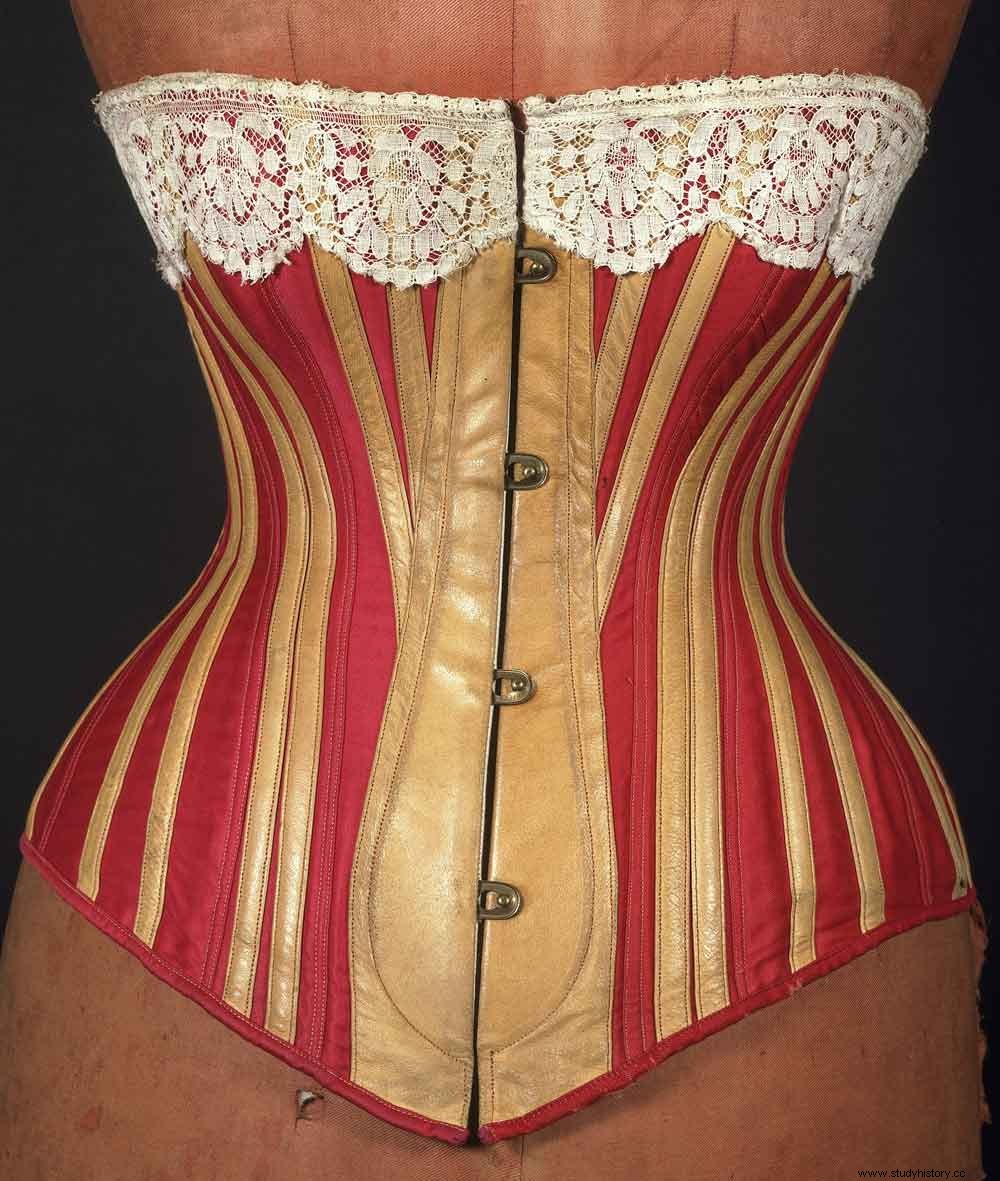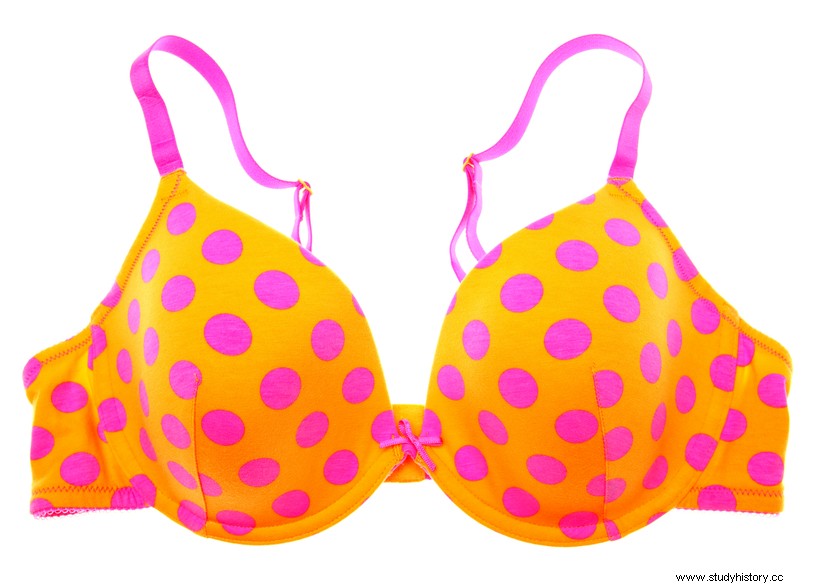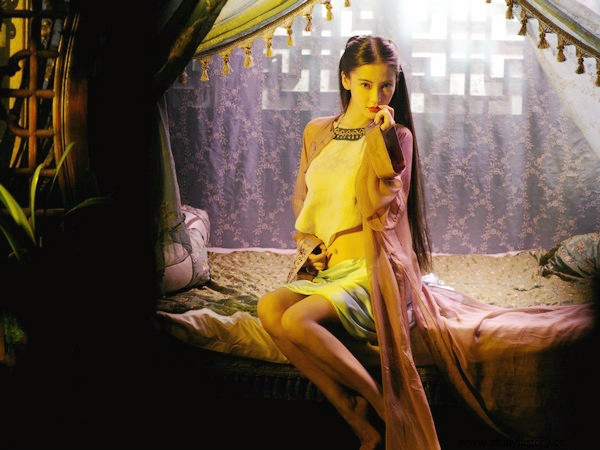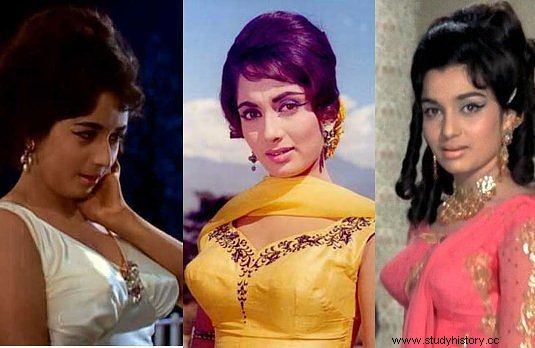Bras or bras are women's underwear to cover and support their breasts and flatter their gracefulness. The history of the bra is closely intertwined with the social development of women's status. It represents the development of fashion stages and various modern views on the aesthetics of the female body. Throughout the history of bras, women have often experienced a variety of underwear to maintain, support, reveal and adjust the appearance of the breasts. In the 16th century, the corset was the first significant shift in the development of underwear. The French stylists used it in the early 16th century to beautify their seductive figure, especially a charming cone shape. The corset flattered women's breasts by supporting the breast upwards, and increased their sexy and feminine appeal.
In the late 19th century, designers split a corset into two parts; one was a waistband for the lower body, and the other was the upper part of a garment that hung on the shoulder. From the beginning of the 20's, underwear for women strongly resembled modern bras. Since then, bras have replaced corsets, especially the lack of metal from World War II generated the end of the corset. When the war ended, fashionable women in Europe and North America loved the most popular underwear:the bra. Later, women in Asia, Africa and Latin America became familiar with wearing bras, as Western fashion influenced Asian countries. It created an impressive fashion for lingerie in these nations.
The 16th century bra story

The bra history can undergo remarkable changes from the 16th century. The earliest pattern for a corset comes from the Minoan age or 1600 BCE. It speaks for a basic underwear in the concept of clothing and tailoring. The corset was designed to flatten and stand out from a woman's bustline, which was considered a modern, fashionable way. Then a woman wore a tight-fitting cloak under the outer petticoat to shape her body in the popular, fashionable shape that there was a change:a skirt of the dress under the dress. Instead of a full undershirt, a woman wore a separate robe under a dress.
In addition, tribes in the mountain range between Asia and Europe have used corsets to beautify the bust. Normally, corsets were decorated with fifty shoelaces and used from childhood for a wedding night. That evening, a groom took a lacing of the bride's garment to show her self-control. According to the French, the corset represents one of the most popular garments in Western civilization. The style is to tighten the waist and push the breasts upwards in an alluring way. The history of bras underwent many convincing changes in the 19th century.
19. century

At that time, there were different opinions about the inventors of modern bras. The history of bras during this period underwent landmark developments. Several design patents for the bra took place in the 19th century. In 1859, Henry S. Lesher of Brooklyn, New York, granted the first breast patent with symmetrical roundness. Luman L. Chapman of Camden, New Jersey, came with a corset substitute. Dressmaker Olivia Flynt had four parents, aiming for ladies with bigger breasts. According to Life magazine, Herminie Cadolle in France produced the first modern bra.
Immediately found it in a luxury catalog of corsets. It represented a two-piece underwear, which Herminid called the corset slit. She designed this garment in two; the lower part covers the waist, and the upper part holds the breasts. In 1893, Marie Tucek made a breakthrough in the design of separate pockets for each breast over a metal plate. This device is similar to today's bra. From then on, home-made garments came into being to generate fierce competition with factory-produced or finished bras. The bra then became an alternative to the bra.
Evaluation of the bra in the 20s

John Walsh in the UK said that the chest came from a military term indicating an arm protector, as the word "le bra" in French means an arm. Manufacturers imitated the word in 1904 when a fashion magazine, American Vogue, first used the term in 1907, leading to a cornerstone in bra history. In 1911, the term was defined in the Oxford English Dictionary. Interestingly, when Mary Phelps Jacob, at the age of 19, went to a party, she was wearing an evening dress. The whalebone corset flattered in the waist. Later, she placed the backless chest where she earned her first dollar. She then sold the patent to Warner Bros. Company for an impressive $ 1,500.
The image above illustrates that a bra or bra includes a pair of cone-shaped cups that contain female breast tissue. A chest strap with straps over the shoulder supports bread tissue. Women who have experienced surgical removal of one or both breasts use specialized bra holders that hold breast prostheses. According to the special needs of pregnant and breastfeeding women, bra models were time-dependent:early 1920s flattering breast designs, oblique models of the following decade and many different shapes in the 1950s, 1960s and 1970s. Sportingly, the bra lifts and supports the chest.
Non-western bra equivalents
Although the history of bras in Western countries has developed at many remarkable stages, different cultures or traditions around the world have produced many types of underwear to meet the needs of women. Among the non-western nations, the developmental stages of the bra are noticeable due to the huge population.
Bra History in China

The bra development has spread over the long history. As a result, China has introduced many different underwear that serve similar purposes as the western bra and corset. The typical example of the bra is the dudou, which forms diamond-shaped underwear to flatten the breasts and cover the abdomen. The old-fashioned bra existed from the Ming and Qing dynasties. This belly band is a piece of cloth that covers a woman's belly. It served to flatter Chinese women's breasts, as an ideal bust was flat-breasted, which created a temptation for the opposite sex. The Chinese invented the dudou in the early 17th century to warm the chest and abdomen. It works as a petticoat for children, women and men to avoid colds and diarrhea.
Patterns of dudou
The design looked very simple, including a square piece of cloth and fastened straps to fasten around the neck and back. At that time, people sewed this simple garment, decorated with sophisticated embroidery. Interestingly, the contents of the embroidery served different purposes. It contained love messages with themes withdrawn from romantic stories in operas, myths or folklore for those in love. Women and future brides liked images of dragons, phoenix and fish, which represented a sign of happiness, bliss and fertility. For older adults, the embroidery described images of turtles, a sign of longevity.
Material for dudou
In terms of material, dudous were made from traditional, popular silk satin. The tape material may be similar to that of dudou. However, rich families preferred gold or silver chains. When the Qing Dynasty ended in the early 1900s, the dudu sank into silence. Then occupied Western lingerie that corsets and brassieres the place of the dudou. Recently, dudou has made an impressive return to global fashion such as fashion garments and underwear. Today, the sexy pattern of a dudou associated with skirts or jeans and backless tops is a common sight in the streets. As a result, it is a move to change the public view of lingerie.
Non-Western equivalent bras in India

The first underwear in India was choli, which looks like a bra. It included a small piece of cloth to cover the chest that became popular in the Chola kingdom. Then a tight-fitting kanchuka appeared in the literature of King Vijayanagara in the 14th century. During this period, skilled tailors or chippiga had experience with bras and blouses. While they are elsewhere in the country, covering the breasts is associated with social status. Unlike the upper class of people in Travancore, Avarna women did not cover their bust in public unless they completed tax payments. Thus, they had little control over their breasts.
Once lived a woman Cherthala refused to pay taxes. Against the current rituals of society, she decided to cover her chest and took to the streets. As word spread across the village of Cherthala, a village officer came to collect treasures. Instead of following the rituals, she cut her breasts and left blood in front of the officer. As a result, he passed away because of his fear. Unfortunately, she died a few minutes later. Her death had spread so widely in society that the then king canceled the tax. Consequently, lower class women could cover their breasts.
Jem in Vietnam

When we look back at the history of traditional dress in Vietnam, there are two symbolic dresses. The first is Ao Dai; long dress women wear at formal events and special occasions. While the other is Ao Yem, an old underwear garment that is the necessary dress for old women. A jewel is the Vietnamese national bodice or underwear that all women in all walks of life use to toil in the fields. It also works as a nightgown on summer nights when the climate is very humid. Yem got in shape in the Ly dynasty. In fact, it originated from the Chinese underwear, dudou, which was very popular during the Ming and Qing dynasties.
"Ao Yem" or grime-top came to life in Vietnam very early. It is a piece of cloth, including a square piece with one corner, designed to fit snugly around the woman's neck. In addition, this material scraper covers the chest and abdomen which are tied by strings on the back. Traditionally, the halter top has a brown or beige color for wear in the field and rustic environments. Throughout Ao yem's history, it has continually changed with reformed designs. In fact, the development of Ao Yem made a milestone at the turn of the century when Western fashion entered Vietnam.
No bra trend
The year 2021 has seen new attitudes to the concept of the best bras. Currently, so many women are turning their backs on bras, a new fashion trend around the world. They are already tired of bras. Some people feel that a bra tightens the rib cage and is incredibly uncomfortable during a long working day. Even if they choose the right bra size, they still find that no one fits right. As a result, some decide to close the bra drawers forever, while others find ways to support their breasts.
Recently, the New York Times and Vogue have published articles about the braless movement that signal the end of the bra verdict. During the pandemic period, women used to comfort with style and avoid the uncomfortable and limiting breast. Women also go braless related to health related issues, their price and social purpose. They have been battling the physical and cultural influences caused by bras for years. For example, a protest at the Miss America pageant in 1968 prompted producers to release new designs.
Pros and cons of wearing a bra
An expert on breast health problems in Beverly Hills raised awareness that sleeping in a bra does not harm health. Some people get less pain in the neck and back when they get the right support. For some, full chest support provides comfort and reduces back pain. Thus, it is a personal choice to help end users prevent back pain.
Unfortunately, few people care about or research women's long-term effects if they wear bras every day. Someone is wearing it; they feel uncomfortable and expect to take it off at home after the work day. Professor Jean-Demis Rouillon conducted a 15-year study to indicate that a bra did not slow down the chest from relaxing with age. In addition, wearing a bra at a young age caused the chance to relax later because it prevented the development of tissue. As a result, it leads to the breakdown of muscles that maintain the chest.
the conclusion
Bras history has developed in many noticeable stages, especially in western countries. The French are stylists like underwear. The design of bras depends on women's changing aesthetic taste and social development. In addition, health and sports have a certain impact on the bra design. Bra development always focuses on the beautification of the female sex. However, there are pros and cons to wearing a bra. The no-bra trend is taking shape as many want to free their breasts and model self-acceptance in society.
